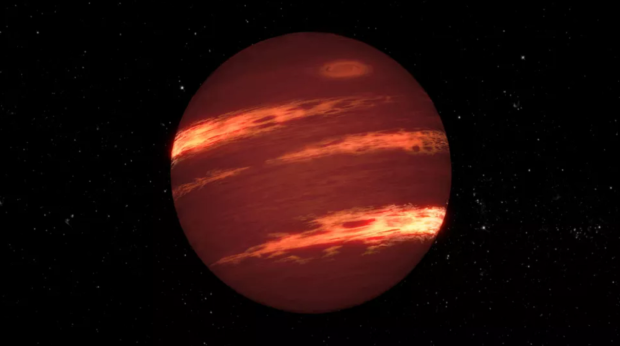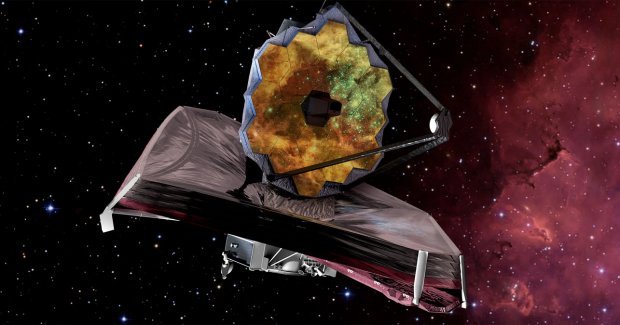NASA's James Webb Space Telescope has captured an exoplanet relatively close to Earth that's approximately twenty times the size of the largest planet in our solar system.

The space agency's newest and most advanced observatory has focused its incredible instruments on an exoplanet called VHS 1256 b, which orbits two small red dwarf stars approximately 72 light-years from Earth within the constellation Corvus. The exoplanet was originally discovered back in 2016 and became of particular interest to astronomers as it glowed red in observations. Webb has now confirmed previous theories about the reddish glow, which were that VHS 1256 b was being obscured by a thick blanket of dust.
Using the space telescopes instruments, astronomers were able to determine that VHS 1256 b is nearly twenty times the size of Jupiter and that its atmosphere contains water, methane, carbon monoxide, carbon dioxide, sodium, and potassium. Additionally, Webb's observations confirmed that VHS 1256 b is wrapped in smoke-like silicate grain clouds that have the some consistency as sand.
This recent observation from Webb mark's the second time NASA's new space telescope has observed carbon dioxide in the atmosphere of an exoplanet. Additionally, the researchers were able to learn more about VHS 1256 b's seemingly turbulent atmosphere, as the observations indicated that VHS 1256 b has an atmosphere that is vertically mixing, with carbon dioxide being pulled up to mix with the methane that's located higher up.
Sasha Hinkley, Associate Professor in the Department of Physics & Astronomy at the University of Exeter and Principal Investigator, said that VHS 1256 b is "definitely not habitable" and should be more so imagined as a giant super-Jupiter object. Furthermore, VHS 1256 b orbits its host's stars at a distance 360 times the distance between the Earth and Sun - its orbit takes a staggering 17,000 years to complete.
In other NASA news, the space agency has selected the company that will construct, develop and test the next-generation spacesuits that will be used by the next Americans to set foot on the Moon. NASA has awarded the company a $228 million contract under its Extravehicular Activity and Human Surface Mobility program, and when the suits are used to walk on the Moon, it will mark the first time Americans have walked on the lunar surface in 50 years.



